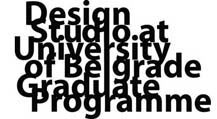Krov Beton hale ne pripada samo hali, već je deo šireg sistema koji povezuje grad i reku. Nadogradnja hale se vrši kroz otvaranje njenog krova korisnicima. Kroz prostor su distribuirana polja – minimalne jedinice sposobne da prime predviđenu funkciju, koje mogu funkcionisati kao izolovani sistemi ili kao deo veće grupe. Promenom konfiguracije same jedinice i načina na koji se povezuje sa susednim menja se konfiguracija većeg sistema i time odgovara na različite prostorne potrebe. Materijalizacija je ostvarena nitima obešenim o tanke šestougaone okvire. Niti kao deo linijskog sistema postaju sredstvo definisanja prostora. Promena njihove gustine utiče na jačinu granice, ali ne dozvoljava potpuni prekid kontakta sa okruženjem.
Roof of the Concrete hall belongs not only to the hall, but is a part of a wider system that connects the city and the river. The hall’s extension is made by opening its roof space for users. Users are offered with covered spaces – minimum units capable of receiving the predicted function, which can operate as isolated systems, or as part of a larger group. By changing the configuration of the unit itself and the way it connects to the adjacent unit, configuration of a larger system changes thus responding to a different spatial needs. Materialization is accomplished through threads which are hung to the thin hexagonal frames. Threads, as part of the linear system, are becoming an instrument of defining the space. Changing threads density will affect the strength of its boundaries, but will never separate it completely from its surroundings.




